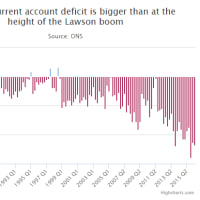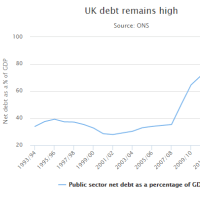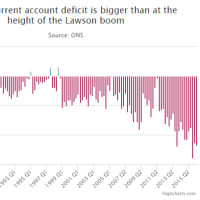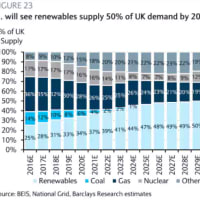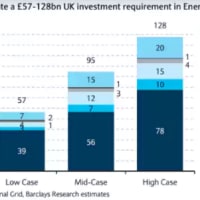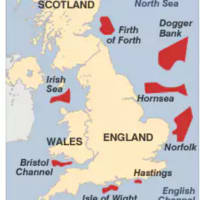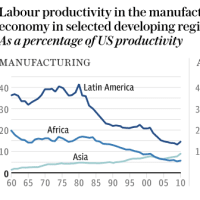Anna Schwartz blames Fed for sub-prime crisis
(アナ・シュワルツ、サブプライム危機はFRBの責任だ)
Ambrose Evans-Pritchard
Telegraph:13/01/2008
(アナ・シュワルツ、サブプライム危機はFRBの責任だ)
Ambrose Evans-Pritchard
Telegraph:13/01/2008
Anna Schwartz, the revered economist, shares her views on the credit bubble with Ambrose Evans-Pritchardつづく
尊敬を集めるエコノミスト、アナ・シュワルツがクレジット・バブルについての意見を語る
As rebukes go in the close-knit world of central banking, few hurt as much as the scathing indictment of US Federal Reserve policy by Professor Anna Schwartz.
結束の強い中央銀行業界での非難が続く中でも、アナ・シュワルツ教授のものほど痛烈なFRBの政策批判はない。
The high priestess of US monetarism - a revered figure at the Fed - says the central bank is itself the chief cause of the credit bubble, and now seems stunned as the consequences of its own actions engulf the financial system. "The new group at the Fed is not equal to the problem that faces it," she says, daring to utter a thought that fellow critics mostly utter sotto voce.
アメリカ金融主義の巫女(FRBで崇拝される存在だ)は、中央銀行そのものが信用バブルの主原因であり、自らの行いが金融システムを飲み込んでしまった結末に仰天しているようだ、と語る。
批評家仲間の殆どが口の中でブツブツ言うばかりの考えを果敢にも口にして「FRBの新しいグループは目の前にある問題に対処不能」と彼女は言う。
"They need to speak frankly to the market and acknowledge how bad the problems are, and acknowledge their own failures in letting this happen. This is what is needed to restore confidence," she told The Sunday Telegraph. "There never would have been a sub-prime mortgage crisis if the Fed had been alert. This is something Alan Greenspan must answer for," she says.
「彼らは市場に率直に話しかけなくちゃ。そしてどれだけ問題が酷いか認めなくちゃ。ついでにこんなことにしてしまってすみません、と自分達の失敗を認めなけりゃいけないわね。信頼回復に必要なのはこれよ」
と彼女はサンデー・テレグラフに語った。
「FRBがしっかりしてりゃ、サブプライム・モーゲージ危機なんて起こらなかったのよ。これはアラン・グリーンスパンが責任を負うべきことだわ」。
Schwartz remains defiantly lucid at 92. She still works every day at the National Bureau of Economic Research in New York, where she has toiled since 1941.
シュワルツは92歳にして、相変わらず挑戦的に明解だ。
彼女は未だ毎日、1941年以来働いているニューヨークの全米経済研究所に勤務している。
Her fame comes from a joint opus with Nobel laureate Milton Friedman: A Monetary History of the United States. It revolutionised thinking on the causes of the Great Depression when published in 1965. The book blamed the Fed for causing the slump. The bank failed to use its full bag of tricks to stop the implosion of the money stock, and turned a bust into calamity by raising rates.
彼女が有名になったのは、ノーベル賞受賞者のミルトン・フリードマンと『A Monetary History of the United States』を共著した時だ。
1965年に出版されると、これは大恐慌の原因に関する考察に革命をもたらした。
この本は不況を発生させたとしてFRBを非難した。
同行は貨幣ストックの崩壊を止める手立ては山ほどあったのにそれを駆使せず、金利を引き上げることで不況を大恐慌に変えてしまったのだ。
"The book was a bombshell," says British monetarist Tim Congdon. "Until then almost everybody thought the free-market system itself had failed in the 1930s. What Friedman-Schwartz say was that incompetent government bureaucrats at the Fed had caused the Depression."
「この本はヤバかった」
とイギリスのマネタリスト、ティム・コンドンは言う。
「あれまで殆ど全員が、自由市場制度は1930年代に自爆したと思ってたんだから。フリードマンとシュワルツは、FRBの能無し役人共が大恐慌を引き起こした、って言ってるんだよ」。
"It had an enormous impact in revitalising free-market conservatism, and it broke the Keynesian stranglehold over policy," he says. Keynes himself was a formidable monetarist. He became a "Keynesian" big spender only once all else seemed to fail.
「自由市場保守主義の活性化には物凄いインパクトがあったし、政策に関するケインズ的締め付けを木っ端微塵にした」
と彼は言う。
ケインズ自身、手強いマネタリストだった。
彼が「ケインズ的」金のバラマキをやったのは、他の手が尽くされて失敗した時だけだ。
The tale of the early 1930s is intricate, but worth rehearsing in the climate of today's credit crunch.
1930年代初頭の物語はややこしいが、今日のクレジット・クランチにおいては復習の価値ありだ。
The October 1929 crash did not cause the slump, it was merely a vivid detail. The US economy muddled through for another year, seemingly sound. Then it buckled as rising defaults in the farm belt set off a run on local banks.
スランプを生じたのは、1929年10月のクラッシュではない。
それはただの目につく一部分に過ぎないのだ。
アメリカ経済はご機嫌でもう一年生き延びた。
その後、穀倉地帯でデフォルトが増加して倒れると、地方銀行で取り付け騒ぎが起こった。
It was at this juncture that critics claim the Fed lost the plot. Washington prohibited the pros at the New York Fed from injecting sufficient stimulus through open market operations [buying bonds].
FRBが足を踏み外したのはこの時だった、と批評家は言う。
アメリカ政府は、ニューヨーク連銀のプロがオープン・マーケット・オペレーション(要するに債券購入)を通じて、十分な刺激を与えることを禁じた。
Contagion spread. The Jewish-owned Bank of the United States was allowed to collapse by fellow clearing banks, for reasons of snobbery and malice.
汚染が広がった。
ユダヤ人が所有する合衆国銀行は、侮蔑と悪意から他の決済銀行に見捨てられて破綻した。
The Chicago Fed insisted into the depths of the deflation that inflation still lurked, that there was an "abundance of funds", that speculators had to be punished, and that bad banks should fail. The staggering blindness of Fed backwoodsmen from 1930-1933 is hard to exaggerate.
インフレは未だ残っている、「資金はたっぷり」ある、投機家は罰せられなければ、悪い銀行は逝けば良い、などと言い張ってシカゴ連銀はデフレの深みに突っ込んでいった。
この1930-1933年のFRBの田舎者のひっくり返るほどの無知ぶりは、決して誇張ではない。
In hindsight, it seems astonishing that the Fed raised the discount rate twice in late 1931 to 3.5 per cent even as global finance was disintegrating. It did so to halt bullion flight and defend the Gold Standard, but it failed to offset the effects with bond purchases. Britain was forced off the Gold Standard in September 1931 after the Atlantic Fleet "mutinied" at Invergordon over 10 per cent pay cuts. That proved a providential crisis - the pound fell. The Bank of England was soon able to slash rates. The slump proved less serious than in the US, and not a single bank collapsed in the British Empire.
国際金融が空中分解中に、FRBが1931年に公定歩合を2回も引き上げて3.5%にしてしまったことなど、後から考えればとんでもない話だ。
金逃避を阻止し金本位制を護るためにそうしたわけだが、債券購入の影響をオフセットするのに失敗した。
1931年9月、給料の10%カットを巡ってインヴァーゴードンの大西洋艦隊が「反乱」を起こした後、イギリスは金本位制から追い出された。
これは神意による危機であることが証明された…ボンドが値下がりしたのだ。
BoEは直ぐに金利を引き下げられるようになった。
結局この不況はアメリカよりも軽症で終わり、大英帝国の銀行は一行も破綻しなかった。
Schwartz warns against facile comparisons between today's world and the Gold Standard era. "This is nothing like the Depression. I don't really believe the economy as a whole is going to fall apart. Northern Rock has been the only episode of a bank failure so far," she says.
今日の世界と金本位制時代を軽率に比較しないように、とシュワルツは警告する。
「これは大恐慌とは全く違うわ。経済が丸ごと瓦解するとは思ってないし。これまで破綻したのはノーザン・ロックだけよ」。
Over 4,000 US banks - a fifth - collapsed in the 1930s. There was no deposit insurance. Real economic output fell by a third, prices by a quarter, and unemployment reached a third. Real income fell by 11 per cent, 9 per cent, 18 per cent, and 3 per cent in the years to 1933.
1930年代には4,000行以上のアメリカの銀行が破綻した…1/5である。
預金保険など存在しなかった。
実体経済は1/3落ち込み、価格は1/4下がり、失業率は1/3に上った。
1933年までの4年間、実質収入は-11%、-9%、-18%、そして-3%落ち込んだ。










